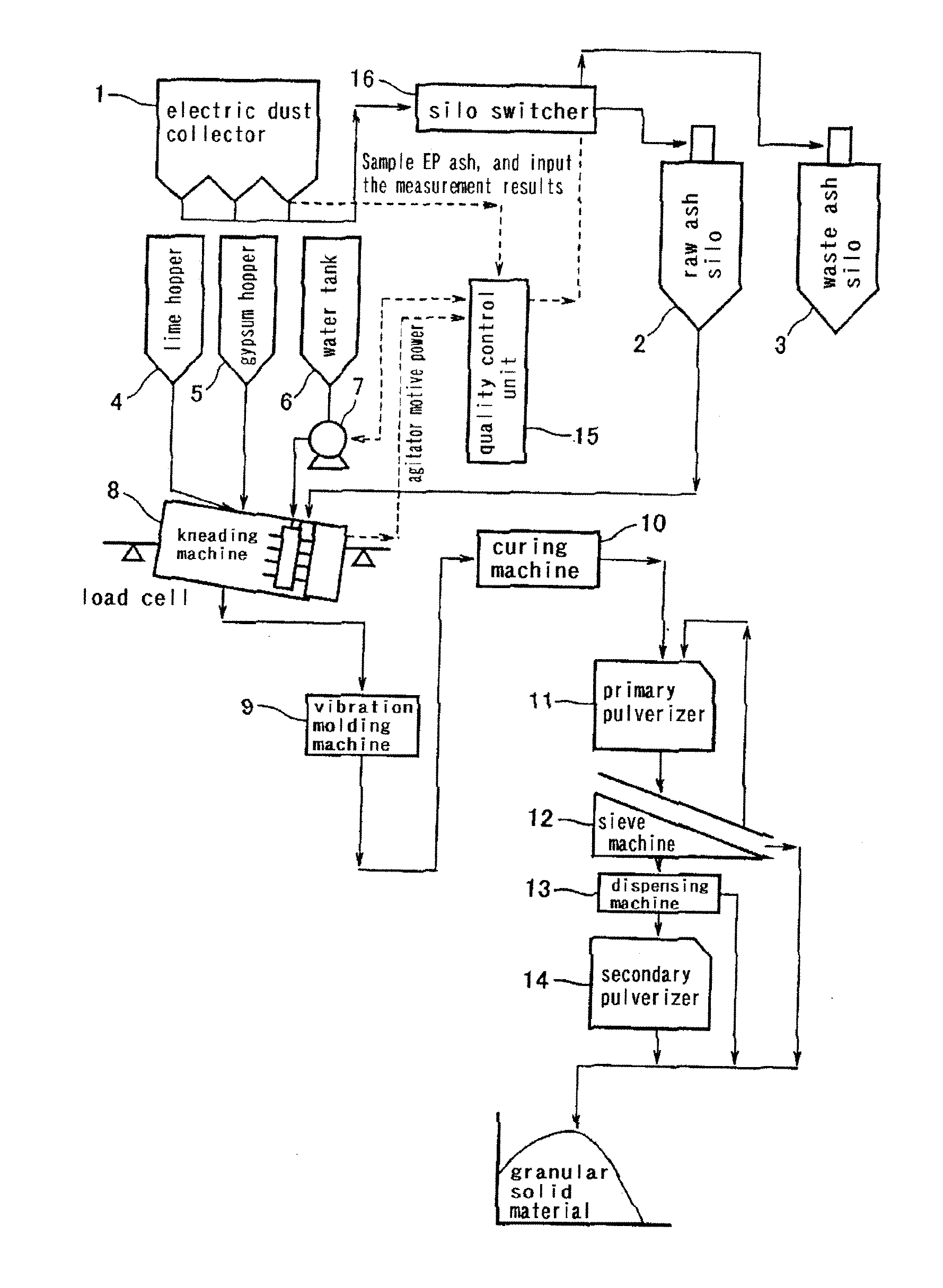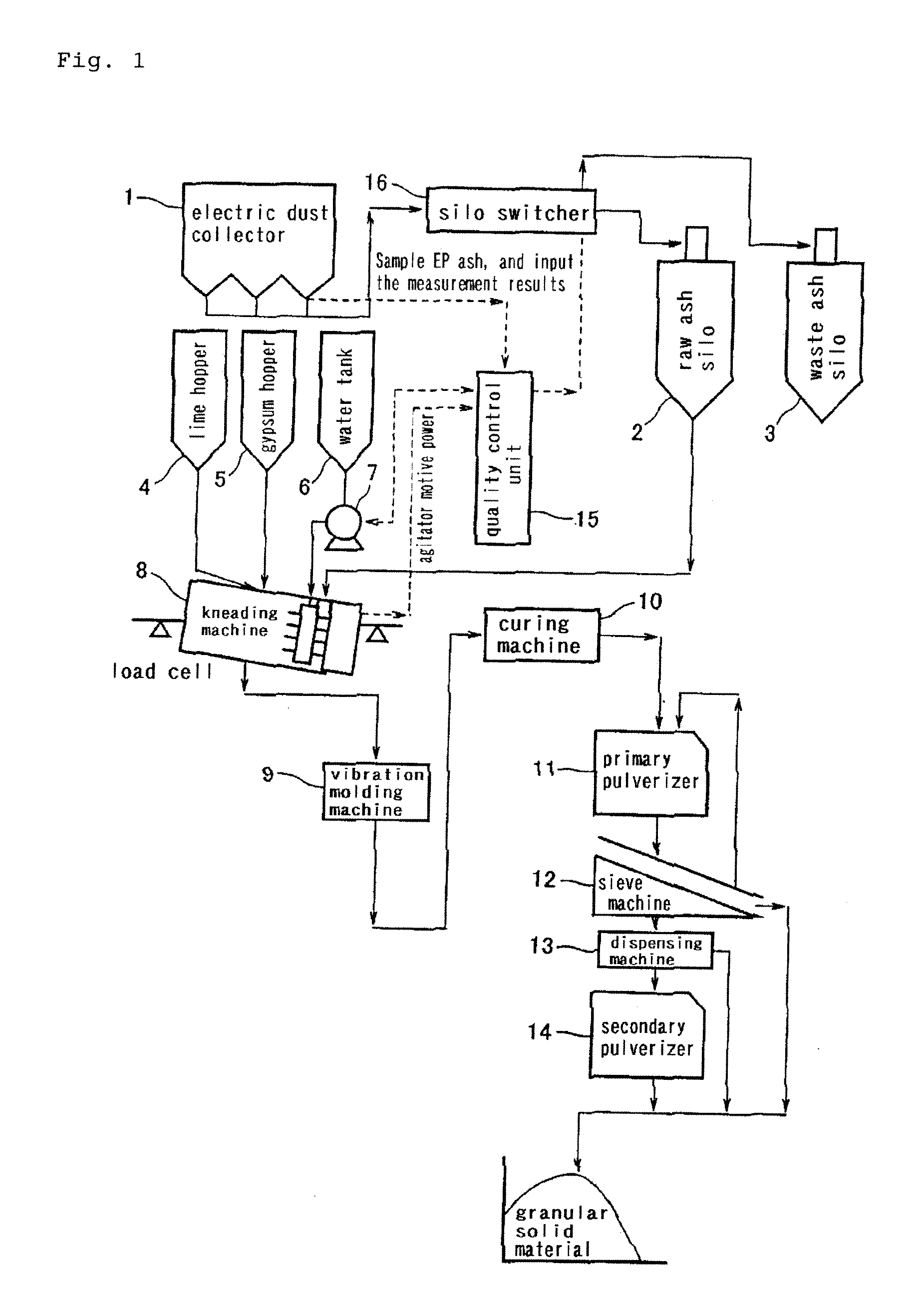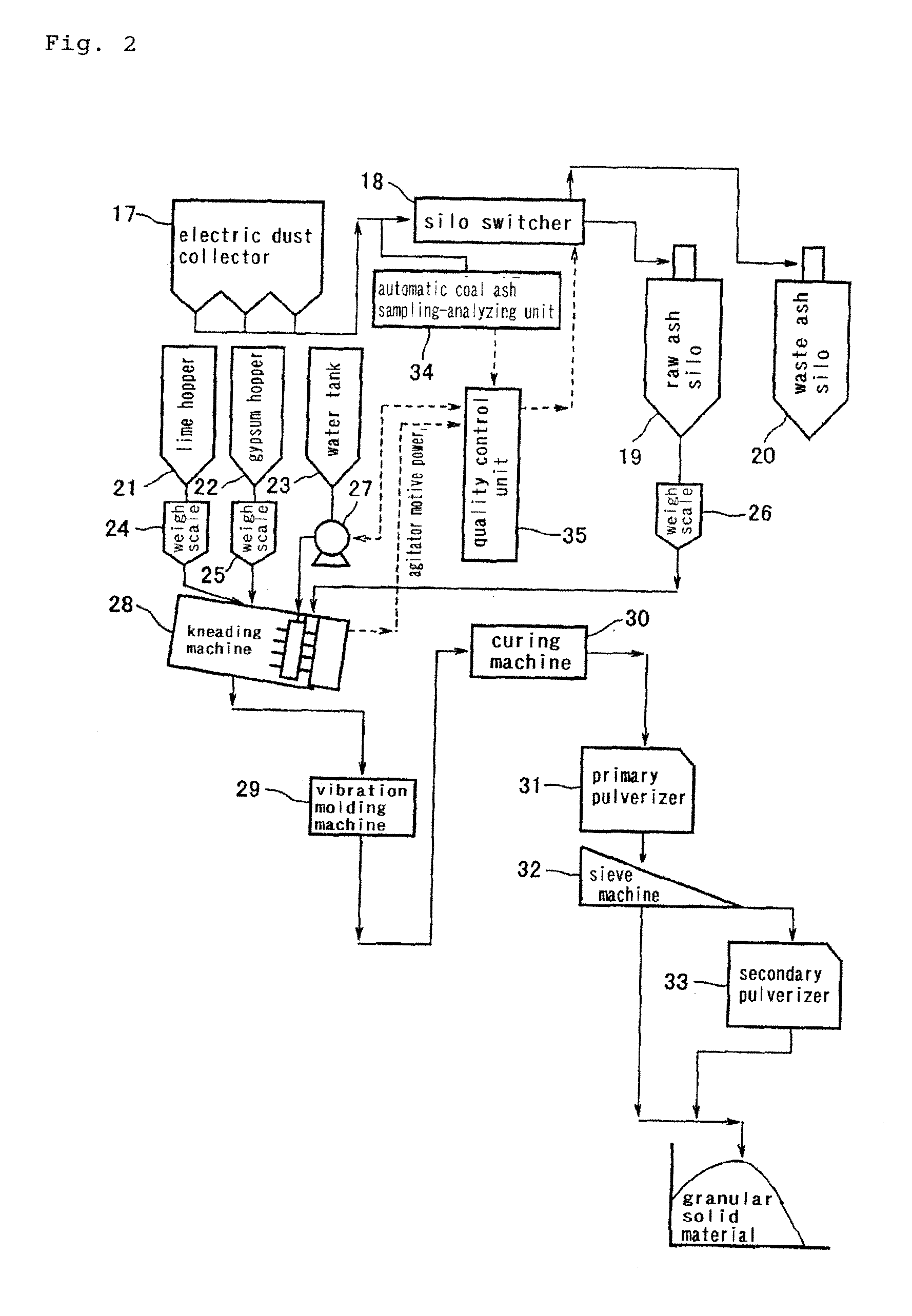Process for Producing Granular Solid Matter from Coal Ash as Raw Material and Apparatus Therefor
a technology coal ash, which is applied in the direction of roads, grain treatment, and maintenance of roads, can solve the problems of deteriorating strength difficulty in estimating the hydrating reactivity of coal ash with some accuracy, and affecting the operation of the production apparatus, so as to achieve satisfactory precision, stable production of granular solid material, and the effect of hydrating reactivity
- Summary
- Abstract
- Description
- Claims
- Application Information
AI Technical Summary
Benefits of technology
Problems solved by technology
Method used
Image
Examples
example 1
[0070]After weighing 300 kg of the coal ash A, 15 kg of quick lime, and 7.5 kg of gypsum on a weigh scale, they were charged in a kneading machine. Based on the relationship of the appropriate amount of the water for kneading versus the corrected basicity of the coal ash shown in FIG. 3, 90 kg of water was charged over 1 min, and the mixture was kneaded for 30 sec. In this procedure, the ratio of (average of motive power during 30 to 40 sec after completion of charging water) / (motive power in idle operation) with respect to the agitator motive power per unit weight of the kneaded material was 3.4. Furthermore, the ratio of (fluctuation of motive power) / (average of motive power) with respect to the agitator motive power per unit weight of the kneaded material for a period of time from 30 to 90 sec after completion of charging the water was 0.15. Next, after kneading for 30 sec, the mixture was withdrawn, and the kneaded material in the funicular state was placed in a mold form of a v...
example 2
[0075]Into a kneading machine equipped with a load cell were charged while weighing sequentially 300 kg of the coal ash B, 20 kg of slaked lime and 7.5 kg of gypsum. As determined from the calibration curve shown in FIG. 3, 82 kg of water was charged over 1 min, and the mixture was kneaded for 30 sec. In this procedure, the ratio of (average of motive power during 30 to 40 sec after completion of charging water) / (motive power in idle operation) with respect to the agitator motive power per unit weight of the kneaded material was 3.2. Furthermore, the ratio of (fluctuation of motive power) / (average of motive power) with respect to the agitator motive power per unit weight of the kneaded material for a period of time from 30 to 90 sec after completion of charging the water was 0.16. Next, after kneading for 30 sec, the mixture was withdrawn, and the kneaded material in the funicular state was placed in a mold form of a vibration molding machine. The mold form was subjected to vibratio...
example 3
[0078]Into a kneading machine equipped with a load cell were charged while weighing sequentially 300 kg of the coal ash B, 20 kg of slaked lime and 7.5 kg of gypsum. As determined from the calibration curve shown in FIG. 3, 82 kg of water was charged over 1 min, and the mixture was kneaded for 30 sec. In this procedure, the ratio of (average of motive power during 30 to 40 sec after completion of charging water) / (motive power in idle operation) with respect to the agitator motive power per unit weight of the kneaded material was 3.3. Furthermore, the ratio of (fluctuation of motive power) / (average of motive power) with respect to the agitator motive power per unit weight of the kneaded material for a period of time from 30 to 90 sec after completion of charging the water was 0.17. Next, after kneading for 30 sec, the mixture was withdrawn, and the kneaded material in the funicular state was placed in a mold form of a vibration molding machine. The mold form was subjected to vibratio...
PUM
| Property | Measurement | Unit |
|---|---|---|
| weight ratio | aaaaa | aaaaa |
| weight ratio | aaaaa | aaaaa |
| particle size | aaaaa | aaaaa |
Abstract
Description
Claims
Application Information
 Login to View More
Login to View More - R&D
- Intellectual Property
- Life Sciences
- Materials
- Tech Scout
- Unparalleled Data Quality
- Higher Quality Content
- 60% Fewer Hallucinations
Browse by: Latest US Patents, China's latest patents, Technical Efficacy Thesaurus, Application Domain, Technology Topic, Popular Technical Reports.
© 2025 PatSnap. All rights reserved.Legal|Privacy policy|Modern Slavery Act Transparency Statement|Sitemap|About US| Contact US: help@patsnap.com



